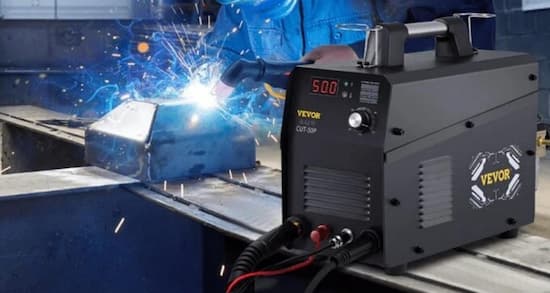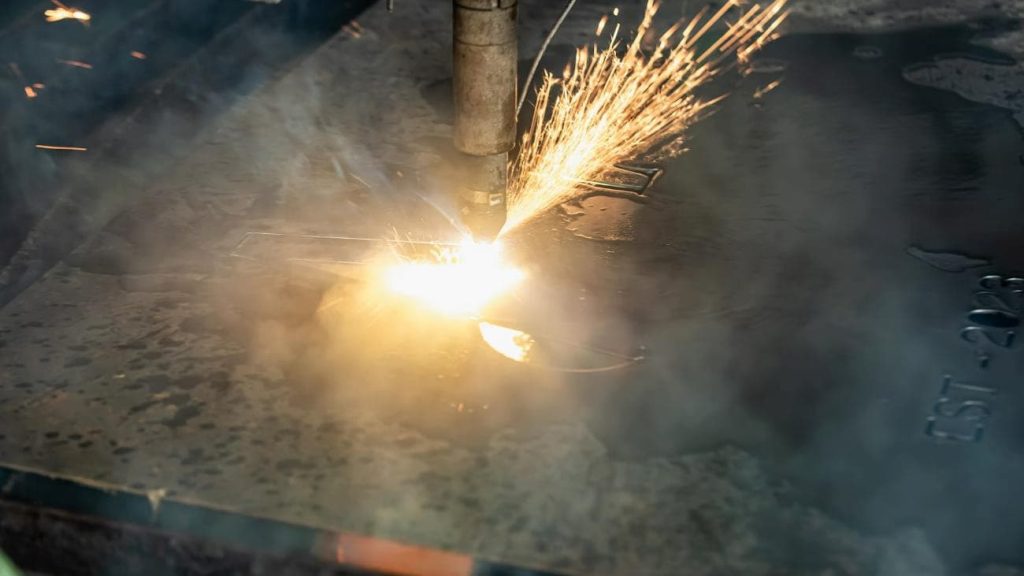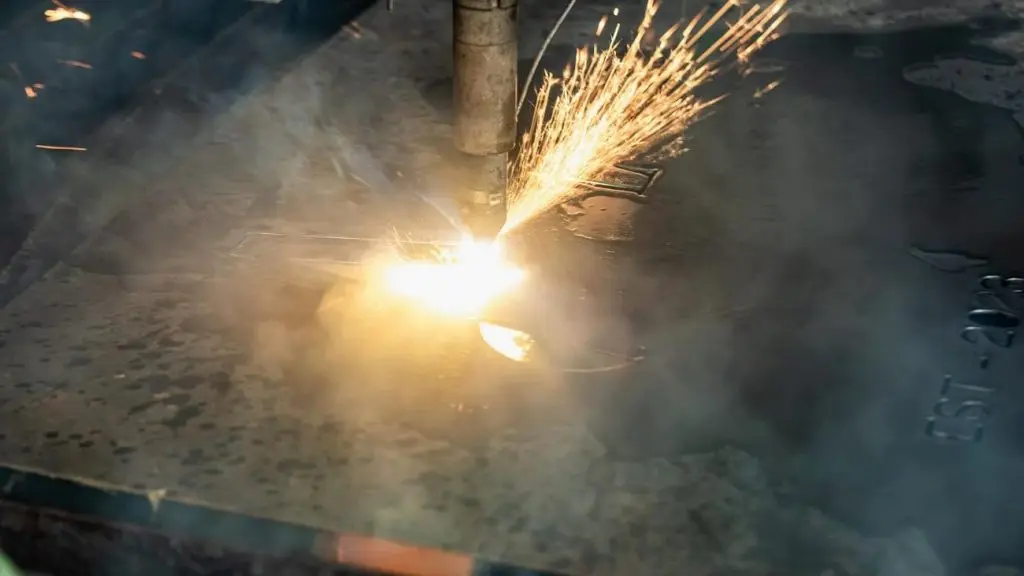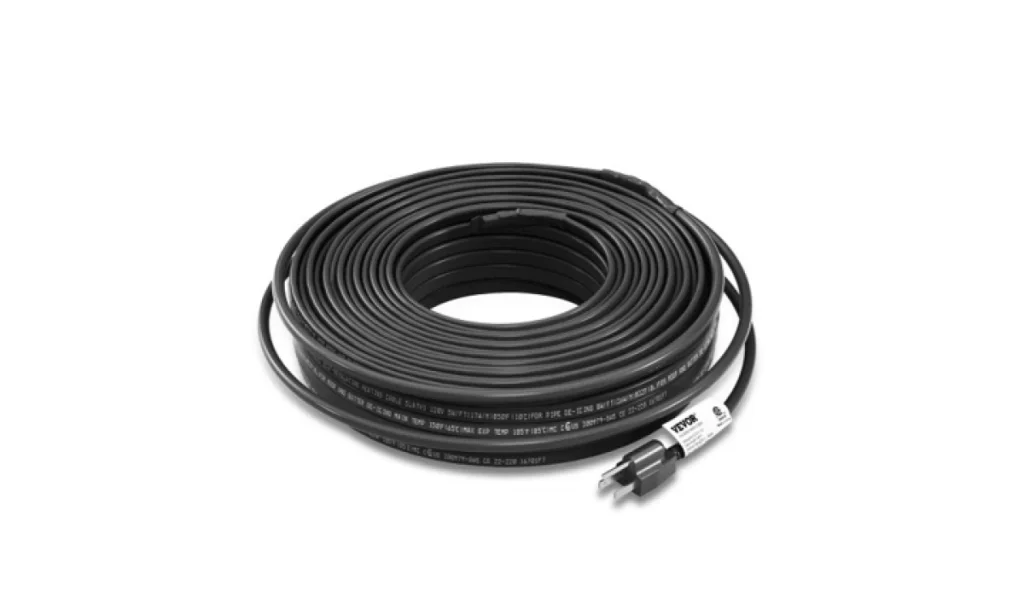As you are ready to embark on your metalwork project with bubbling anticipation, a crucial question gets in the way: Should I use a plasma cutter vs a torch for my project? In this blog, we’ll dive deep into these two cutting tools and explore their working mechanisms. We’ll also give a comprehensive account of the respective pros of plasma cutter vs torch to enable informed decision-making. Whether you are an experienced welder or an aspiring metalwork hobbyist, this blog aims to clarify your understanding of these two cutting technologies and help you make the correct choice. Get started!
Table of contents

What is Plasma Cutting and How Does It Work?
Put concisely, plasma cutting is the practice of cutting metals using plasma jets. These jets are composed of plasma (which is essentially ionized gas) and can well exceed 20,000°C in temperature, making it possible for them to melt and cut a broad range of metals and alloys.
As the cutting begins, plasma cutters like the VEVOR Pilot Arc Plasma Cutter form a plasma arc between the electrode and the workpiece. The electrode functions as a cathode and the workpiece functions as an anode. The electrode, equipped with a gas nozzle, generates the plasma stream heated by electricity for cutting through metals. During cutting, the plasma arc transfers to the nozzle from the electrode, effectively slicing through electrically conductive metals like stainless steel, mild steel, and aluminum.
Since plasma cutters operate by forming an electrical circuit between the workpiece and the cutter, they do not work with non-conductive materials. In addition, the thickness of the workpiece can also impact the cutting quality. For example, the VEVOR Air Cutter with Plasma Torch promises clean cuts for metal pieces within 12mm in thickness, although its maximum cutting depth can reach 16mm.

Advantages of Plasma Cutter
Plasma cutters offer several advantages, making them a popular choice in metal fabrication and cutting applications. Here are some key advantages of plasma cutters:
Versatility: Plasma cutters can efficiently cut through a wide range of electrically conductive materials, including steel, stainless steel, aluminum, copper, and other alloys. This versatility makes them suitable for diverse applications.
High Precision: Plasma cutting provides high precision and accuracy, allowing for intricate and detailed cuts. This is particularly beneficial for tasks that require fine-tuned shapes and designs.
Fast: Plasma cutters are known for their fast speed and efficiency. They can cut through less thicker metals at a faster rate compared to many other cutting methods such as oxyacetylene cutting, improving overall productivity for your project.
Portability: Many plasma cutting systems are compact and portable, making them suitable for on-site or remote work. This portability enhances flexibility and allows for versatile use in different locations.
Ease of Use: Plasma cutters are relatively easy to operate, and the learning curve for using them is often shorter compared to some other cutting methods. This makes them accessible to a wide range of users, including hobbyists and DIY enthusiasts.
Safety: Plasma cutting does not involve inflammable gas or use an open flame, making it a safer alternative to many other cutting methods, especially oxyfuel cutting.

What is Torch Cutting and How Does It Work?
Torch cutting refers to a metal cutting process that utilizes a torch, typically an oxyacetylene torch, to heat and melt a metal workpiece. This process is also commonly known as oxy-fuel cutting.
During the preparation stage, the oxygen and the fuel (typically acetylene) are stored respectively in pressurized containers, which are connected to the torch via two separate hoses. When cutting starts, oxygen and fuel are simultaneously released from the containers, conveyed through the hoses, mixed at the torch tip, and ignited, generating a high-temperature flame (typically over 3,000°C). This flame is then used for heating the metal until it reaches its melting point.
As the metal is about to melt under the intense flame, a high-pressure stream of oxygen is directed onto the metal, oxidizing it and blowing it away. In this manner, a cut is formed along the cutting path.
Advantages of Torch Cutting
Torch cutting has enjoyed widespread adoption in the metalworking industry due to the following advantages.
Thick Material Cutting: Torch cutting is particularly effective for cutting thick materials. It can handle substantial thicknesses, making it suitable for heavy-duty applications in industries such as shipbuilding and construction.
No Electricity Required: Unlike some cutting methods, oxyfuel torch cutting does not rely on electricity for the cutting process. This independence from electricity can be advantageous in certain settings or locations where electrical power may be limited or unavailable.
Low Equipment Cost: The equipment for oxyfuel torch cutting is generally more affordable compared to some other cutting methods, making it accessible to a broad range of users, including small businesses and hobbyists.

Plasma Cutter vs Cutting Torch: What Are the Differences?
In metal fabrication, the torch vs plasma cutter rivalry seems inevitable, as both techniques are advantageous in their own ways. To decide which cutting technology to use for your metalwork project, we need to probe deeper into cutting torch vs plasma cutter and compare their performance in multiple aspects. This is exactly what we’ll undertake in this part.
Cutting Precision
In the competition for precision between plasma cutter vs acetylene torch, plasma cutting emerges as the clear winner. This is because torch cutting affects a larger area, making it difficult to get a clean cut. On the other hand, plasma cutting concentrates energy in a much smaller area, allowing for a higher degree of precision. The result is that plasma cutting can generate smoother and more accurate cuts.
Power
In terms of raw cutting power, torch cutting outperforms plasma cutting by a landslide. While plasma cutting boasts ultra-precise cuts, it cannot cut metal sheets that are too thick, which is generally 1-2 inches in the context of plasma cutting. How about torch cutting then? While torch cutting is inferior in precision, it can carve metals of up to 24 inches in thickness. Needless to say, this is a one-sided comparison.
Portability
With the advent of new inverter technology, plasma cutters are made increasingly portable, allowing you to carry them anywhere with little effort. However, one major drawback of plasma cutters is that they require electricity. This means you would have to carry an additional power source along with your plasma-cutting tool.
On the other hand, the situation with torch cutters is reversed: they are usually heavier and hence harder to carry, but they require no electricity to operate, somewhat offsetting the trouble caused by their heaviness.
Versatility
Versatility is a large concept and can mean lots of things. But crudely speaking, both plasma cutting and torch cutting are versatile, albeit in different ways.
For example, plasma cutting excels in precision but is hard-pressed to handle thick metal plates. This makes it suitable for precise cutting tasks for thin metals. On the other hand, torch cutting is the go-to choice for metalwork involving thick ferrous plates, but stumbles when precision is emphasized or when dealing with certain metals like stainless steel and aluminum. It is clear that both plasma cutting and torch cutting are capable of different task types.

Price
If we focus on the upfront cost only and ignore the rest, then plasma cutting is usually the more expensive of the two. However, when taking the additional costs (post-cutting cleanup cost, finishing cost, etc.) into account, plasma cutting may fall back to a similar level as torch cutting in terms of cost. Thus, a definitive conclusion of which costs more can be elusive without further information added.
FAQ
When Should You Not Use a Plasma Cutter?
Here are some scenarios when you should avoid using a plasma cutter:
Cutting Non-Conductive Materials: Plasma cutters are designed for cutting electrically conductive materials. They may not be effective for cutting non-conductive materials like certain ceramics, glass, or plastics.
Limited Ventilation: Plasma cutting produces fumes and smoke, especially when cutting certain materials. If you are working in an area with poor ventilation, the accumulation of fumes can pose health risks.
Cutting Thick Materials: Plasma cutters are versatile, but they may not be as efficient for cutting extremely thick materials. In such cases, other cutting methods like oxyacetylene cutting may be more effective.
What Materials Can a Plasma Cutter Handle Compared to a Torch?
Compared to a torch, plasma cutters can handle a wide range of metals, including mild steel, carbon steel, stainless steel, cast iron, aluminum, copper, brass, etc. However, since plasma cutters create a circuit between the torch and the metal being cut, they can’t handle non-conductive materials, such as wood, glass, plastics, and so on.
For Which Applications Is a Plasma Cutter More Suitable than a Torch, and Vice Versa?
A plasma cutter is more suitable than a torch in applications requiring precision cutting, speed, and versatility across a range of electrically conductive materials. Its high-temperature plasma arc provides clean, narrow cuts with minimal distortion, making it ideal for intricate designs and thin to thick metal sections.
On the other hand, an oxyacetylene torch is preferable for applications involving thick ferrous metals, where its broad flame can deliver substantial heat input. Additionally, torch cutting is effective in environments with limited access to electricity.
Conclusion: Plasma Cutter vs. Torch, Which One Is Better?
In the end, both oxy acetylene torch vs plasma cutter have their unique strengths, and which is the better one hinges on the specific needs of your project. If you work with only thin metal sheets and your project requires precision, plasma cutters are the surefire way to go. However, if you primarily deal with thick metal plates and precision is not your priority, torches may fit your purpose just as well. The ultimate decision between plasma cutter vs torch is up to you to make based on your needs.






Ich wusste nicht, dass Plasma ionisiertes Gas ist. Das ist ein interessantes Verfahren. Schneiden mit Plasma nach Wunsch kann für viele Projekte passend sein.